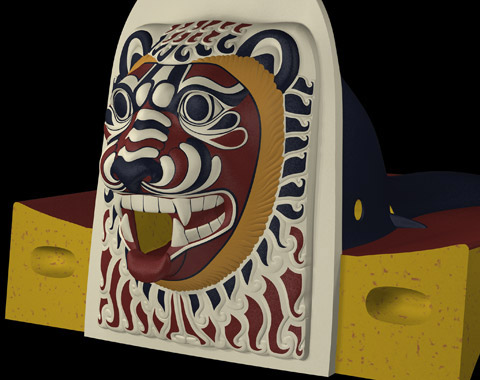The Archaic Sanctuary at Mon Repos, Corfu: Digital Reconstruction and Ancient Greek Architecture
This project began with a snarling lion. The molded terracotta lion water spout, close to 50cm high and attached to a complex drainage tile weighing altogether about 150kg, once decorated the eaves of a major Greek temple. The style of the lion and other modeled elements from the building suggest a date slightly before 600 B.C. At this moment of the Archaic period, the temple represents an important, early experiment in Greek monumentality. The rich and brightly painted decoration and the size indicate that the residents of Corfu had created one of the largest, if not the largest, temple at that time at their sanctuary.
The Corfu Archaic Heraion Project, conducted by Dr. Philip Sapirstein of the University of Pennsylvania, seeks to reconstruct and present the architectural remains from the early Greek sanctuary at Mon Repos, Corfu. Until now the sanctuary has remained little known except to specialists. Although excavations at Mon Repos in 1914 and again during the 1960s recovered hundreds of architectural fragments and thousands of other objects from the sanctuary, most of this important material remains unpublished and inaccessible to the public.
This website seeks to improve the situation by making the digital equivalent available for free under the Creative Commons 3.0 license. A major contribution is the creation and distribution of high quality 3D scans of most of the architectural material, the primary evidence for studying the Mon Repos sanctuary. However, analytical texts and visualizations of the restored temple are featured as well as synthetic texts on the broader context and significance of this site for our understanding of the ancient world. The methods, especially those for making the 3D scans and the digital reconstructions, are presented throughout.
A project of this scale is indebted to the support of many people and institutions, who are presented in the acknowledgments.
| E V I D E N C E | A N A L Y S I S | R E C O N S T R U C T I O N | S I G N I F I C A N C E |










 Stumble It!
Stumble It!

No comments:
Post a Comment